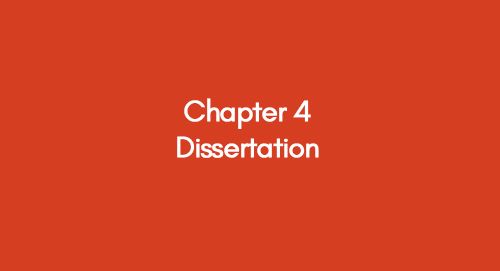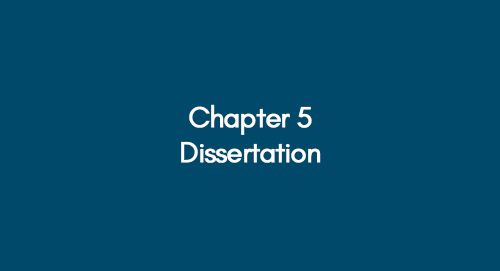
How to Write Chapter 4 Dissertation?| A Complete Guide
February 22, 2023
Free Sociology Dissertation Examples For Students
February 22, 2023Writing a dissertation can be an overwhelming task. There are so many steps that it can be a bit hectic to keep track of them all!
If you're currently in the process of completing your dissertation, then you know that Chapter 5 is one of the most important parts. In this blog post, we will provide a detailed guide on whatever you need to know about Chapter 5 of your dissertation.
What is Chapter 5?
In dissertation, chapter 5 is the conclusion chapter. In chapter 5, you will summarize your research findings and draw conclusions. This chapter should also include future implications for further research related to your topic.
Overview of Chapter 5
The fifth chapter is where you report on your research findings. It means discussing both qualitative and quantitative data collected during your study. You should also include any trends or patterns in the data that may apply to your conclusions.
It’s important to discuss any unexpected results that may have arisen during your study as well as any limitations of the research methodology employed. Finally, this chapter should also provide an analysis of the implications of your work for future research.
Important Things to Consider While Writing Chapter 5
a. Length
The conclusion chapter should not be too long or too short. It should be long enough to summarize the key findings and contributions of the research adequately but not so long that it becomes repetitive or overly detailed. A good rule of thumb is to aim for a length of around 10% of the total dissertation word count.
To get detailed insight into how long your dissertation should be, you can visit this link:
How long should my dissertation be?
b. Significance
In the concluding chapter, it's important to emphasize the significance of the research. It means highlighting not just what was discovered but why it matters. What are the implications of the research for the field or society as a whole? How does it advance knowledge or solve a practical problem? By answering these questions, the writer can help the reader understand the broader impact of the research.
c. Tone
In chapter 5 dissertation’s tone should be sophisticated and professional. However, it's also important to strike a balance between being objective and enthusiastic. While it's important to avoid making unsupported claims or over-hyping the significance of the research, it's also okay to express some excitement about the findings and their potential implications.
d. Reflection
In addition to summarizing the research, the conclusion chapter is also a good place to reflect on the process of conducting the research.
- What were some of the challenges or surprises that arose during the study?
- What did the researcher learn about the topic, the methods, or themselves?
This kind of reflection can add depth and context to the dissertation.
e. Organization
It's important to ensure that the conclusion chapter is well-organized and easy to follow. That means using clear headings, transitional phrases, and summary statements to guide the reader through the key points. It's also important to avoid introducing new information or arguments in the conclusion chapter, as this can confuse the reader and undermine the coherence of the overall dissertation.
Effective Ways to Write Chapter 5 in Dissertation
To write an effective conclusion chapter, the following steps should be considered:
1. Recapitulate the Research Questions or Objectives
Begin by restating the research questions or objectives addressed in the dissertation. It helps to ensure that the reader is reminded of the research's focus and the dissertation's purpose.
2. Summarize the Findings
Provide a summary of the key findings of the research. Highlight the analysis's main points, and ensure that you provide a clear and concise summary of the results. You can discuss the relevance of the findings to the research questions and objectives.
3. Discuss the Contributions of the Study
It is where you discuss the impact of your research on the field. Highlight the originality and significance of your findings, and explain how they contribute to the current knowledge in the field. You can also suggest how your research can be built upon by future studies.
4. Address the Limitations of the Study
Every study has limitations, and it is essential to acknowledge them in your conclusion chapter. Discuss any weaknesses or limitations of your study, and explain how they may have affected your findings. It helps to ensure that the reader has a complete understanding of the research and its potential shortcomings.
5. Offer Recommendations for Future Research
This is an opportunity to suggest areas that require further investigation. Highlight the gaps in the research, and suggest how future studies can address them. It can help to guide future researchers in their work and ensure that the field continues to progress.
Conclusion
Writing a dissertation is hectic, no doubt! But if you break it down into manageable pieces like chapters, it becomes much easier to stay on top of everything needed for completion. In this blog post, we provided a detailed guide on what you need to know about writing Chapter 5 – the conclusion section – which includes summarizing all previous sections and discussing any future implications for further research related to your topic.
Check out these resources below to get more academic assistance:
Get 3+ Free Dissertation Topics within 24 hours?



























